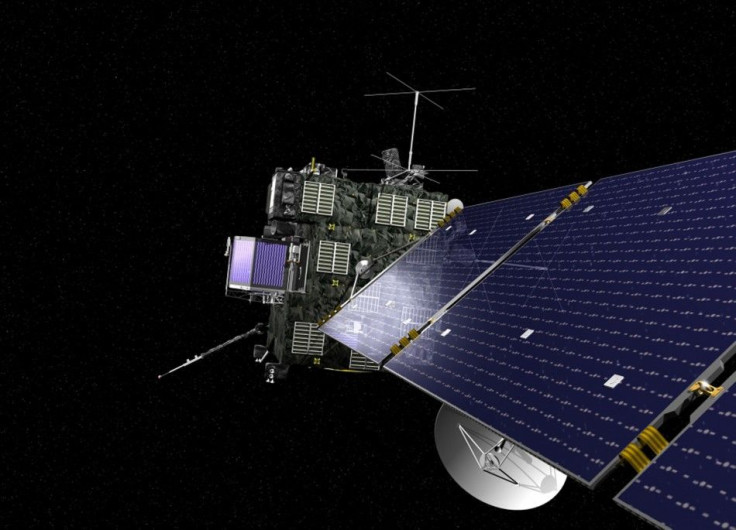Scientists identify four rare organic compounds on Philae’s comet considered ‘Ingredients for life’

The European Space Agency, or ESA, reported four organic compounds exist on Philae comet considered as the building blocks of life on Earth and never before seen at any explored comets. The four rare compounds belong to the 16 organic compounds detected by the device Cometary Sampling and Composition, or COSAC, under the Rosetta mission.
The findings came after the lander Philae touched down at Agilkia, the landing site on the comet Churyumov-Gerasimenko 67P. Ptolemy and COSAC, systems specially designed for the detection of complex organic molecules on a comet, analysed the samples collected from the lander during the first touchdown. This revealed a set of 16 organic compounds comprising numerous carbon and nitrogen-rich compounds, including four compounds – methyl isocyanate, acetone, propionaldehyde and acetamide – that have never before been detected in comets.
The report, published in the journal Science, discussed the discovered complex molecules and its key roles in the chemical processes of the prebiotic synthesis of amino acids, sugars and nucleobases or the ingredients for life. "Imagine you want to build a house and you go to a forest, where there are trees, mud and rocks. You could make a house out of that, but it would be hard work,” European Space Agency's senior science advisor, Professor Mark McCaughrean, told BBC News to explain the significance of the findings on the formation of life on Earth.
"We've now discovered the comet is more like a hardware shop - lots of pre-made building blocks, like door frames, bricks etc. It gives you a head start,” McCaughrean said.
However, McCaughrean stated there is a possibility the compounds were not formed directly on the comet. "One of the big questions, though, is this material made on the comet? Or is it made first in space and then incorporated into the comet? We don't know the answer to that yet."
In November 2014, the Rosetta mission that carried Philae lander was launched by ESA. The mission aims to test the theory that comets brought organic compounds on Earth’s surface that were thought significant on its chemical and biological evolution that provides the ingredients for life.
The comet carrying Philae is now approaching perihelion, where the comet orbits closest to the sun. In August 13, the comet will be close to the sun before it swings around and begins its outward journey again and returns after 6.5 years.
Contact the writer at feedback@ibtimes.com.au





















